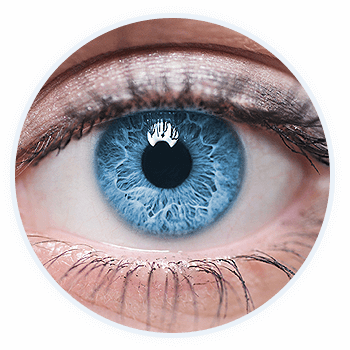
Have you noticed tiny specks drifting across your vision or sudden flashes of light? Most of the time, these are harmless and a normal part of aging. But in some cases, they can signal a serious eye condition that needs urgent attention.
Keep reading to learn what flashes and floaters are, when to worry, and how they can be treated.
What are Floaters?
Floaters are tiny specks, cobwebs, or squiggly lines that drift in your field of vision. While they may seem like they’re in front of your eye, they’re actually floating inside the vitreous (the jelly-like fluid that fills your eye.)
Floaters occur when clumps of cells or gel cast tiny shadows on your retina. You’re more likely to notice them when looking at a plain background, like a clear sky or blank wall.
Common causes of floaters include:
- Aging (vitreous shrinkage or thickening)
- Eye inflammation
- Nearsightedness
- Previous cataract surgery
Most people learn to ignore floaters over time unless they increase in number or become more noticeable.
What are Flashes?
Flashes are bursts of light in your vision. They can appear as sparks, streaks, zigzag lines, or flickers—sometimes white, sometimes colored.
Flashes happen when the vitreous pulls or rubs on your retina, causing tension. They may appear in one or both eyes.
When Should You Be Concerned?
Occasional floaters and flashes are usually harmless. However, they can sometimes indicate a serious condition, such as a retinal tear or detachment, which can lead to permanent vision loss if not treated promptly.
Seek immediate care if you notice:
- Numerous flashes
- A sudden increase in floaters
- A gray curtain covering part of your vision
- Shadows in your peripheral vision
A prompt eye health exam can help protect your vision. A retinal tear or detachment often requires urgent surgical repair. The faster you receive medical care, the higher your chances of saving your sight
Treatment Options for Flashes and Floaters
Most floaters and flashes don’t require treatment, but if they interfere with your vision or are caused by an underlying condition, options include:
1. Vitrectomy
A surgical procedure that removes the vitreous and its debris, replacing it with a salt solution, oil, or gas. While not all floaters can be removed, most patients notice clearer vision.
2. Laser Treatment (Vitreolysis)
A painless procedure that uses a laser to break up floaters, reducing their appearance and improving vision.
3. Managing Minor Floaters at Home
Looking up and down several times can sometimes move floaters out of your direct line of sight.
Underlying conditions, such as eye inflammation or migraines, should also be addressed as part of treatment.
Protect Your Vision
While most flashes and floaters are harmless, regular monitoring is essential. Our eye doctors can perform a thorough exam to rule out serious issues, determine if treatment is needed, and recommend how often your eyes should be checked.
If you notice new or worsening flashes and floaters, don’t wait. VisionPoint Eye Center has an Urgent Care Clinic during regular business hours and always has a doctor on call for urgent eye emergencies. Schedule your appointment at VisionPoint Eye Center in Bloomington, IL, today to protect your vision.










